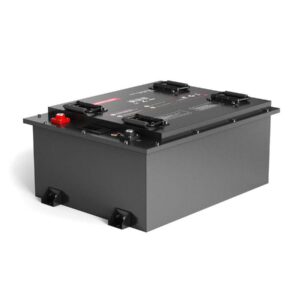How to tell when a battery is fully charged on a battery charger?
Determining when a battery is fully charged depends on the device type and charging system. For most modern chargers, indicators include LED color changes (e.g., red to green), voltage stabilization, and app notifications. Smart devices often send push alerts or trigger audible alarms at 100% capacity. Advanced systems like EVs use BMS-controlled charging curves, terminating when current drops below 3% of rated capacity. Pro Tip: Always verify full charge using manufacturer-recommended methods to avoid overcharging.
Best 8V Batteries for Golf Carts
How do LED indicators signal full charge?

LED indicators use color transitions (red→green) or blinking patterns to denote charging status. Many chargers maintain a steady green light once voltage plateaus at 100% SOC. For lead-acid batteries, this typically occurs at 14.4V (12V systems), while lithium-ion reaches 4.2V/cell. Pro Tip: Verify with a multimeter—fully charged 12V AGM batteries should read 12.8–13.0V at rest.
What role do mobile apps play in charge notification?
Smart chargers and EVs use apps like TELD or TeCharging to send push notifications at predefined SOC thresholds. These systems integrate with BMS data, providing real-time voltage/current graphs. For example, Tesla’s app alerts users when charging reaches 80% (for battery longevity) or 100%. Practically speaking, enable “Charge Complete” alerts in your EV app settings for remote monitoring.
| Notification Type | EV Systems | Mobile Devices |
|---|---|---|
| Push Alerts | 100% SOC | 100% SOC |
| Custom Thresholds | 50–90% SOC | 20–95% SOC |
| Audible Alarms | BMS Triggers | Third-party Apps |
How does voltage stabilization indicate full charge?
Chargers switch from constant current (CC) to constant voltage (CV) mode near full capacity. A 72V LiFePO4 battery, for instance, stops charging when current drops below 2.1A at 84V. This voltage plateau typically lasts 10–30 minutes. Real-world example: A 20Ah e-bike battery charging at 5A will reduce to 0.5A when fully saturated. Why does this matter? Overcharging lithium batteries beyond CV phase risks thermal runaway.
Can third-party apps improve charge monitoring?
Yes, apps like Battery Full Alert or AccuBattery provide granular control over charge thresholds. They track mAh input versus rated capacity, calculating true SOC. For Android, enable “Battery Full” broadcasts in developer options to trigger custom alarms. Pro Tip: Set alerts at 95% SOC to extend lithium battery lifespan—the final 5% causes disproportionate stress.
| App Feature | iOS | Android |
|---|---|---|
| Custom Alerts | Limited | Full Support |
| Health Metrics | Basic | Advanced |
| Battery Calibration | No | Yes |
Battery Expert Insight
FAQs
Do all chargers automatically stop at 100%?
Quality smart chargers do, but basic models may trickle-charge indefinitely. Verify your charger’s specs—look for “auto-shutoff” or “float mode” in descriptions.
Why does my phone show 100% but keep charging?
Most devices enter saturation phase after reaching 100%, balancing cells. This normal process lasts 15–45 minutes before true termination.
